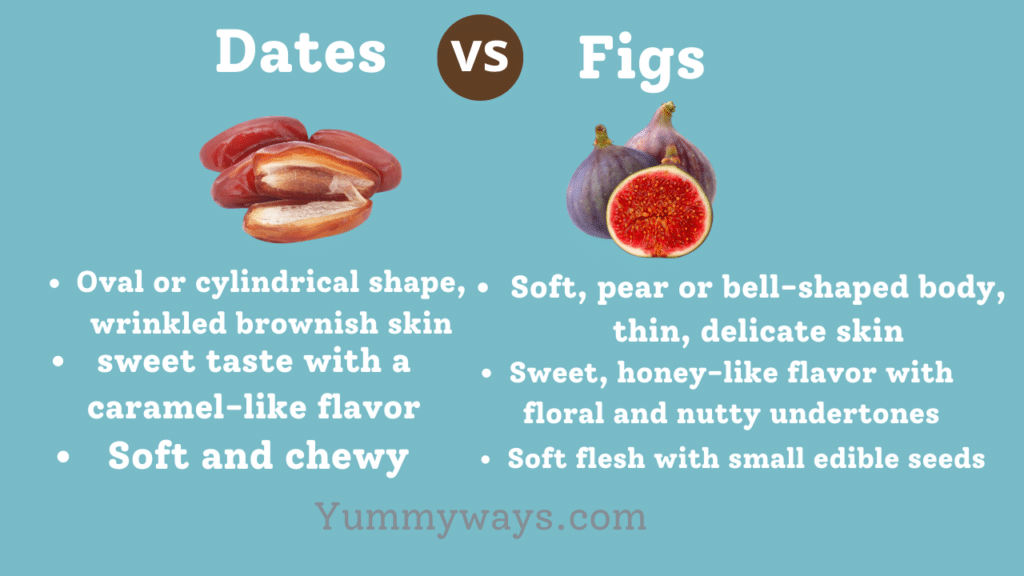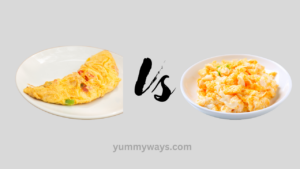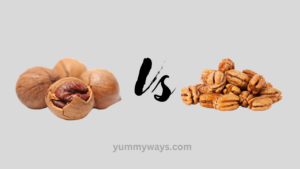Dates and figs are sweet and delicious fruits but differ in taste, texture, and nutritional value. In this guide, we will explore the characteristics of dates and figs, their uses in cooking and baking, and their health benefits. Whether you’re a fan of one or both fruits, this guide will help you understand their unique qualities and make informed choices when incorporating them into your diet. We will also discuss the similarity and many more queries about these two. So, let’s dive in and explore what makes dates and figs so special!

Contents
- 1 What is Dates?
- 2 What is Figs?
- 3 Overview Of dates vs figs
- 4 Detailed Differences Between Dates vs Figs
- 5 Similarities Between Dates and Figs
- 6 Which One is Better?
- 7 Conclusion
- 7.1 What are dates and figs?
- 7.2 Are dates and figs the same thing?
- 7.3 What do dates and figs taste like?
- 7.4 Are dates and figs healthy?
- 7.5 How should dates and figs be stored?
- 7.6 Can individuals with dietary restrictions eat dates and figs?
- 7.7 How can dates and figs be incorporated into recipes?
- 7.8 Are dates and figs suitable for vegans and vegetarians?
- 7.9 Can dates and figs be used as natural sweeteners?
- 7.10 Can dates and figs help with digestion?
What is Dates?
Dates are the fruit of the date palm tree, scientifically known as Phoenix dactylifera. They are oval or cylindrical, with wrinkled, brownish skin and a fleshy interior. Dates are known for their sweet taste and have been cultivated for thousands of years in the Middle East and North Africa.
What is Figs?
Figs are a fruit from the Ficus carica tree, native to the Mediterranean region and Western Asia. Figs have a unique appearance and taste. They are small to medium-sized fruits with soft, pear, or bell-shaped bodies and thin, delicate skin ranging in color from green to purple or black, depending on the variety.
Overview Of dates vs figs
| Feature | Dates | Figs |
| Appearance | Oval or cylindrical shape, wrinkled brownish skin | Soft, pear or bell-shaped body, thin, delicate skin |
| Color | Brown | Green, purple, or black |
| Taste | sweet taste with a caramel-like flavor | sweet taste with a caramel-like flavour |
| Texture | Soft and chewy | Soft flesh with small edible seeds |
| Culinary Uses | Snacking, baking, desserts, energy bars, smoothies | Salads, cheese platters, jams, spreads, baked goods, dried snacks |
| Nutritional Benefits | Good source of dietary fiber, vitamins, and minerals | Good source of dietary fibre, vitamins, and minerals |
| Cultural Significance | Associated with Middle Eastern and North African cuisines | Celebrated in Mediterranean and Middle Eastern cuisines |
| Historical Significance | Cultivated for thousands of years | Cultivated for thousands of years |
| Popular Varieties | Medjool, Deglet Noor, Zahidi | Brown Turkey, Black Mission, Calimyrna |
| Origin | Middle East, North Africa | Mediterranean region, Western Asia |
Also Read: The Ultimate Comparison: Lentils vs Quinoa
Detailed Differences Between Dates vs Figs
Appearance
Dates have an oval or cylindrical shape with wrinkled brownish skin. Figs have a soft, pear or bell-shaped body with thin, delicate skin. Depending on the variety, skin colour can range from green to purple or black.
Taste
Dates have a sweet taste with a caramel-like flavor. Figs taste sweet with honey-like flavor notes and subtle floral and nutty undertones.
Texture
Dates have a soft and chewy texture, especially when fresh and moist. Figs have a soft flesh with numerous small edible seeds. The texture can vary from moist and pulpy to chewy, depending on the ripeness of the fig.
Culinary Uses
Dates are enjoyed as a snack on their own, and they are used in various culinary applications such as baking, desserts, energy bars, smoothies, and as a natural sweetener. Figs are often used in salads, added to cheese platters, used in jams and spreads, incorporated into baked goods like cakes and pastries, and can dry for snacking or as an ingredient in recipes.
Nutritional Profile
Dates are a good dietary fiber source, providing soluble and insoluble fibre. They also contain essential minerals like potassium, calcium, and magnesium, as well as vitamins such as vitamin B6 and vitamin K. Figs are also a good dietary fiber source, providing soluble and insoluble fibre. They contain minerals like potassium, calcium, and magnesium and offer various vitamins and antioxidants.
Cultural and Historical Significance
Dates have a long history and cultural significance, particularly in Middle Eastern and North African cuisines. They have been cultivated and enjoyed for thousands of years. Figs have been cultivated and celebrated for centuries, especially in Mediterranean and Middle Eastern cuisines. They hold cultural and historical significance in these regions.
Also Read: Acorn vs Chestnut: Which One is the Better Nut
Popular Varieties
Popular date varieties include Medjool, Deglet Noor, and Zahidi. Common fig varieties include Brown Turkey, Black Mission, Calimyrna, and several other regional varieties.
Origin
Dates originated in the Middle East and North Africa, where they have been cultivated for thousands of years. Figs have their origins in the Mediterranean region and Western Asia.
Similarities Between Dates and Figs
While there are differences between Dates and Figs, there are also several similarities between the two types of fruits. You must know about them too to get a complete knowledge of these two kinds of fruits.
- Sweetness: Both dates and figs are known for their naturally sweet flavours. They provide a natural sweetness that can satisfy cravings for a sweet treat.
- Nutritional Benefits: Both fruits offer nutritional benefits. They are good sources of dietary fibre, which aids in digestion and promotes a healthy digestive system. Dates and figs also contain essential minerals such as potassium, calcium, and magnesium, necessary for various bodily functions.
- Culinary Versatility: Both dates and figs are versatile fruits used in various culinary applications. They can enjoy fresh as a standalone snack, incorporated into recipes for baked goods, used in jams and spreads, added to salads, or utilized in savoury dishes.
- Traditional Use: Dates and figs have a long history of cultivation and consumption in different cultures worldwide. They have been used for culinary and medicinal purposes for thousands of years.
- Mediterranean and Middle Eastern Cuisine: Dates and figs hold cultural significance in Mediterranean and Middle Eastern cuisines. They have used ingredients in traditional dishes and desserts in these regions.
- Natural Energy Source: Both fruits are known for their natural energy-boosting properties. They contain natural sugars, which can provide a quick energy source and make them popular for athletes and those seeking a natural energy snack.
- Dried Variants: Both dates and figs are often available in dried form. Dried dates and figs have a longer shelf life and can enjoy as a convenient, portable snack. The drying process intensifies their natural sweetness.
Also Read: Beets vs Turnips: A Comprehensive Comparison
Which One is Better?
I think both dates and figs have distinct qualities, and it’s challenging to declare one as definitively better. They each offer unique flavors, textures, and nutritional benefits. Dates have a delightful sweetness, caramel-like flavor, and soft, chewy texture. They are often used as a natural sweetener and are a popular ingredient in baked goods and desserts. Dates are also a good source of dietary fiber, essential minerals like potassium, and various vitamins.
On the other hand, figs have a sweet taste with honey-like undertones and soft, luscious flesh that can vary in texture. They are versatile and can be enjoyed fresh or used in various culinary creations, including salads, jams, and baked goods. Figs are also a good source of dietary fiber, minerals like calcium and magnesium, and vitamins. Choosing dates and figs depends on your preference and how they fit into your diet and culinary preferences. Both fruits offer nutritional benefits and can enjoy as part of a balanced lifestyle. I recommend trying both fruits to discover which resonates more with your taste buds and suits your dietary needs.
Also Read: Whiting vs Croaker: What’s the Difference
Conclusion
Both dates and figs are nutritious fruits that offer various health benefits. Dates are a good source of fiber, potassium, magnesium, and antioxidants. They are also high in natural sugars, making them a great energy-boosting snack. Dates have been linked to improved digestion, reduced inflammation, and a lower risk of heart disease. On the other hand, Figs are rich in fiber, vitamins, and minerals such as calcium and iron. They are known for their high antioxidant content and have been associated with improved digestion, bone health, and immune function. Both fruits can enjoy as part of a healthy diet and provide a sweet and nutritious alternative to processed snacks.
In this comparison-based discussion, we have explored the differences and similarities between dates and figs, two classic types of fruits. We have also discussed each fruit’s shape, filling, taste, texture, nutritional content, and the sauces typically served with them. If you think this was a helpful discussion, then our effort will gain some results. There are some more discussions on this site related to different fruit. You may read them too. Thanks for reading.
What are dates and figs?
Dates and figs are two types of fruit that are consumed worldwide. Dates are the fruit of the date palm tree, while figs are the fruit of the ficus tree.
Are dates and figs the same thing?
No, dates and figs are not the same thing. They are different fruits that come from different types of trees. However, they share some similarities in taste and nutritional value.
What do dates and figs taste like?
Dates have a sweet and caramel-like taste with a chewy texture. They are described as having a rich and complex flavour. Figs, conversely, have a unique sweet and slightly earthy taste. They can eat fresh or dried and have a soft, pulpy texture.
Are dates and figs healthy?
Both dates and figs are considered to be healthy fruits. They are a good source of dietary fibre, vitamins, and minerals. Dates are particularly rich in potassium and antioxidants. Figs are known for their high fibre content and are a good calcium and iron source.
How should dates and figs be stored?
Dates and figs can store at room temperature for a short period of time, but it is best to store them in the refrigerator to prolong their shelf life. Dried dates and figs can keep in airtight containers in a cool, dry place.
Can individuals with dietary restrictions eat dates and figs?
Many individuals with dietary restrictions can enjoy dates and figs. However, they are relatively high in natural sugars, so people with diabetes or those following a low-sugar diet should consume them in moderation. Additionally, some individuals may have allergies or sensitivities to these fruits, so it is important to be cautious if you have any known allergies or intolerances.
How can dates and figs be incorporated into recipes?
Dates and figs are versatile ingredients that can use in various recipes. They can enjoy as a snack, added to smoothies, used as a topping for yogurt or cereal, incorporated into baked goods like cakes and muffins, or used in savoury dishes like salads or tagines. Dried dates and figs can chop and add to trail mixes or used in homemade energy bars.
Are dates and figs suitable for vegans and vegetarians?
Yes, dates and figs are suitable for vegans and vegetarians. They are plant-based fruits and do not contain any animal-derived ingredients.
Can dates and figs be used as natural sweeteners?
Yes, various recipes can use dates and figs as natural sweeteners. They have a naturally sweet taste, which makes them a popular alternative to refined sugars in baking and cooking. They can blend into a paste or puree and sweeten desserts, sauces, and dressings.
Can dates and figs help with digestion?
Both dates and figs are considered to have positive effects on digestion. They are high in dietary fibre, which can help promote regular bowel movements and prevent constipation. However, it is important to drink adequate water when consuming fibre-rich foods to help prevent any digestive discomfort.

